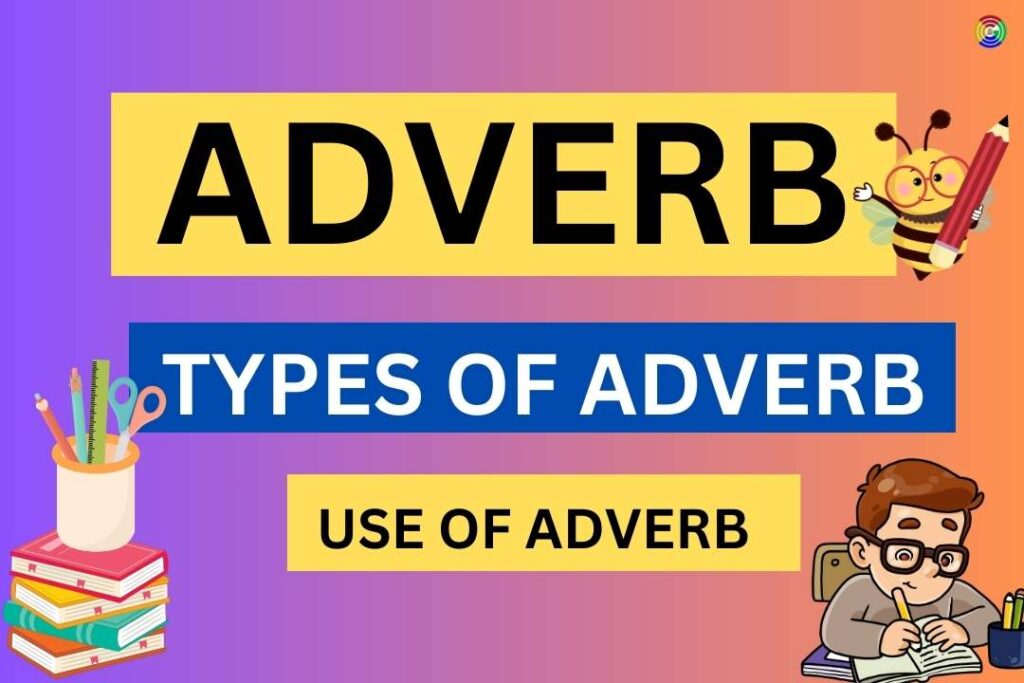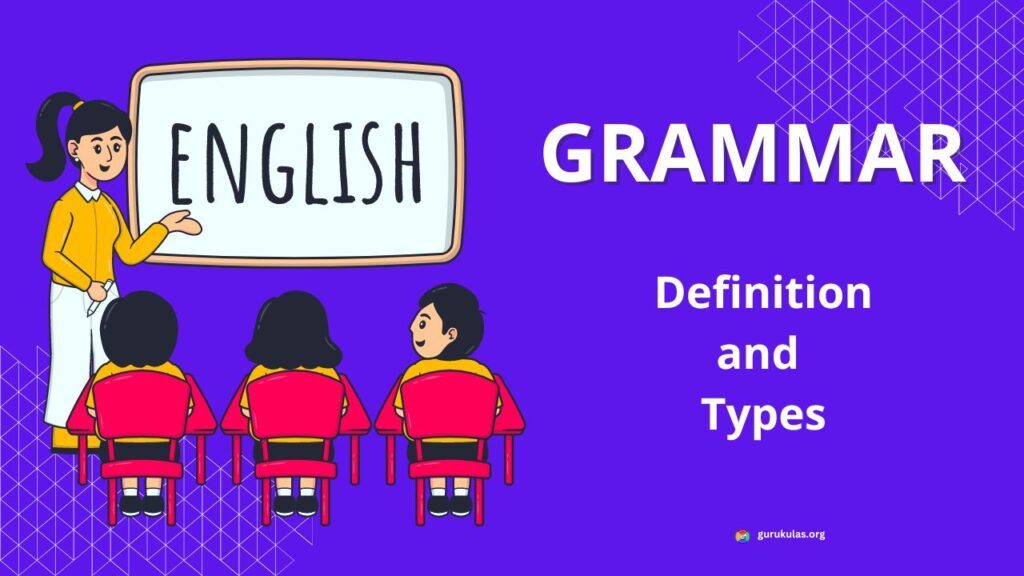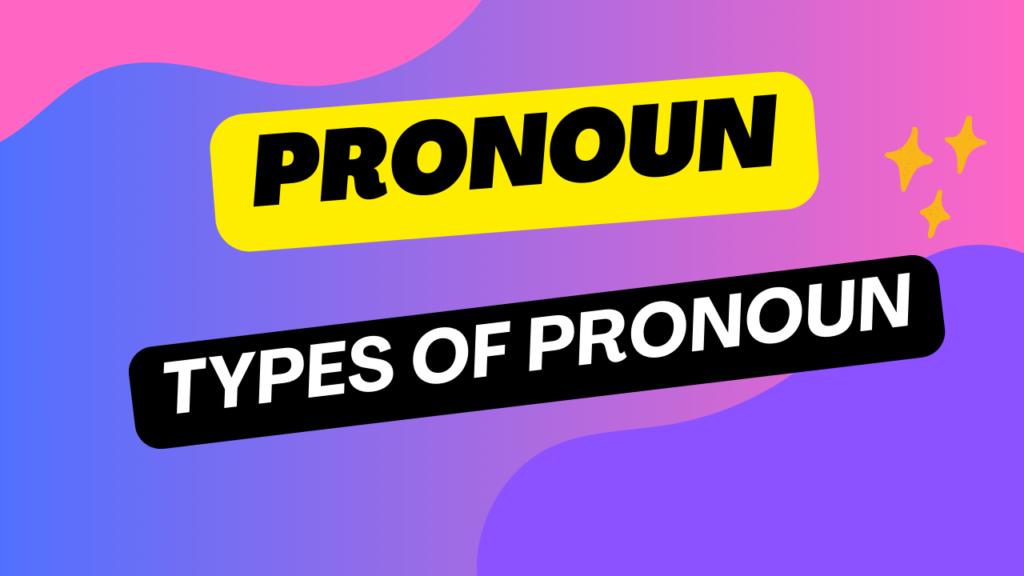Adverbs : Adverbs are an important part of English grammar, offering more detail and clarity to sentences. Whether you’re a beginner or an experienced writer, knowing how to use adverbs can greatly improve your communication skills. This article will provide a clear explanation of what adverbs are, their different types, and how they function in sentences. By the end of this post, you’ll have a better grasp of how to effectively use adverbs.
What Is an Adverb?
An adverb is a word that modifies, qualifies, or adds detail to a verb, an adjective, or another adverb. It can answer questions like “How?”, “When?”, “Where?”, and “To what degree?”. Essentially, adverbs help paint a clearer picture of the action or description in a sentence, providing more context and meaning.
For instance, in the sentence:
- “She sings beautifully,”
“Beautifully” is the adverb modifying the verb “sings” by explaining how she sings.
Types of Adverbs
Adverbs can be grouped into several categories, each serving a different function in a sentence. Here’s an overview of the main types of adverbs:
1. Adverbs of Manner
These adverbs describe how an action is carried out or in what manner something happens. Many adverbs of manner are formed by adding “-ly” to an adjective, although this isn’t always the case.
Examples:
- He ran quickly to catch the bus. (Describes how he ran)
- She speaks softly in meetings. (Describes how she speaks)
Note: Some adverbs, such as “well,” “hard,” “fast,” and “early,” do not end in “-ly” but still function as adverbs of manner.
2. Adverbs of Time
These adverbs provide information about when an action takes place, whether in the past, present, or future. They are essential for placing events in a specific time frame.
Examples:
- I will call you tomorrow.
- She already left for the airport.
Adverbs of time include “now,” “later,” “soon,” “yesterday,” and “always.”
3. Adverbs of Place
Adverbs of place tell us where an action occurs, helping to clarify the location or direction in which something happens.
Examples:
- They went upstairs to get the keys.
- The dog is playing outside.
Common adverbs of place are “here,” “there,” “above,” and “somewhere.”
4. Adverbs of Frequency
These adverbs describe how often something happens. They are typically placed before the main verb (except when the verb is “to be,” in which case they come after it).
Examples:
- He always drinks coffee in the morning.
- She rarely misses a meeting.
Some common adverbs of frequency include “often,” “seldom,” “never,” and “usually.”
5. Adverbs of Degree
Adverbs of degree provide more detail about the intensity or extent of an action, adjective, or another adverb. These adverbs explain how much or how little something is done.
Examples:
- She is very talented. (Modifies the adjective “talented”)
- They worked hard on the project. (Modifies the verb “worked”)
Examples of adverbs of degree include “extremely,” “quite,” “too,” “barely,” and “almost.”
6. Adverbs of Certainty
These adverbs convey how certain or unsure someone is about an action or event. They express the level of confidence in a statement.
Examples:
- She will definitely attend the event.
- I’m probably going to the party tonight.
Common adverbs of certainty are “certainly,” “definitely,” “probably,” and “maybe.”
How to Use Adverbs Effectively
To use adverbs effectively, it’s important to understand their placement and the purpose they serve. Here are some tips to help you use adverbs in your writing:
1. Where to Place Adverbs
- Adverbs of manner, place, and time typically go after the verb in a sentence (e.g., “She runs quickly,” or “We went there yesterday”).
- Adverbs of frequency generally come before the main verb (e.g., “She always smiles,” or “They rarely eat out”).
- Adverbs of degree usually precede the adjective or adverb they modify (e.g., “He is very tall” or “She sings extremely well”).
Note: When using the verb “to be,” adverbs of frequency often come after the verb (e.g., “She is always happy”).
2. Don’t Overuse Adverbs
While adverbs can enhance your writing, overusing them can make your sentences feel heavy or repetitive. Instead of relying on too many adverbs, try to choose more specific verbs or adjectives. For example, rather than saying “She runs very fast,” consider saying “She sprints.”
3. Enhance Descriptions with Adverbs
Adverbs can make descriptions more vivid and detailed. When you want to explain how something is done or emphasize a particular quality, adverbs are invaluable. For instance, instead of saying “He smiled,” you could say “He smiled warmly,” adding more depth to the action.
Common Mistakes with Adverbs
Even seasoned writers sometimes make errors with adverbs. Here are a few common pitfalls to avoid:
1. Incorrect Placement of Adverbs
Adverbs can sometimes be misplaced, leading to confusion. For example:
- Incorrect: “She ran quickly to catch the bus, but the bus was too late.”
- Correct: “She quickly ran to catch the bus, but it was too late.”
2. Confusing Adverbs and Adjectives
It’s essential to distinguish between adverbs and adjectives. An adverb modifies a verb, an adjective, or another adverb, whereas an adjective modifies a noun.
- Incorrect: “She did a good job on the project.”
- Correct: “She did a well job on the project.”
In this case, “well” is the adverb modifying the verb “did.”
3. Overusing Adverbs Ending in “-ly”
Many adverbs end in “-ly,” and while these can be useful, relying on them too much can make writing feel repetitive. For instance, instead of saying, “She quickly and easily solved the problem,” you could say, “She solved the problem effortlessly.”
Conclusion
Adverbs play an important role in English grammar by enhancing sentences and providing more information about actions, qualities, or other adverbs. Understanding the different types of adverbs and how to use them will allow you to communicate more clearly and effectively. By following the tips shared in this post and avoiding common mistakes, you can use adverbs confidently in both writing and speech.
As you continue to practice, remember that adverbs can make your sentences more interesting and detailed without overwhelming them. Mastering the use of adverbs is a valuable tool that can significantly improve your writing style.
Adverbs FAQ
1. What is an adverb?
An adverb is a word that modifies a verb, an adjective, or another adverb. It provides additional information about how, when, where, or to what degree an action is performed.
2. What questions do adverbs answer?
Adverbs typically answer the following questions:
i.) How? (e.g., She sings beautifully.)
ii.) When? (e.g., He arrived yesterday.)
iii.) Where? (e.g., They are waiting outside.)
iv.) To what degree? (e.g., She is very talented.)
3. What are the types of adverbs?
Adverbs can be categorized into the following types:
1. Adverbs of Manner (e.g., quickly, softly)
2. Adverbs of Time (e.g., now, tomorrow)
3. Adverbs of Place (e.g., here, outside)
4. Adverbs of Frequency (e.g., always, often)
5. Adverbs of Degree (e.g., very, extremely)
6. Adverbs of Certainty (e.g., definitely, probably)
4. How do I identify an adverb in a sentence?
Adverbs often end in -ly (e.g., “quickly,” “softly”), but not always. Look for words that describe:
i.) How the action is performed (e.g., fast, well)
ii.) When it occurs (e.g., now, later)
iii.) Where it happens (e.g., here, outside)
iv.) The intensity of an action or quality (e.g., very, too)
5. Where should I place adverbs in a sentence?
i.) Adverbs of manner, place, and time: Usually placed after the main verb (e.g., She sings beautifully).
ii.) Adverbs of frequency: Placed before the main verb (e.g., She always smiles).
iii.) Adverbs of degree: Positioned before the adjective or adverb they modify (e.g., He is very happy).
6. Can an adverb modify an adjective?
Yes, an adverb can modify an adjective. For example:
l.) “She is very happy.”
Here, the adverb “very” modifies the adjective “happy.”
7. Do all adverbs end in “-ly”?
No, not all adverbs end in “-ly.” While many adverbs are formed by adding “-ly” to an adjective (e.g., quickly, softly), others do not follow this rule. For instance:
l.) “Fast,” “well,” “hard,” and “early” are adverbs that do not end in “-ly.”
8. What are some examples of common adverbs?
Here are some examples of adverbs based on their types:
l.) Manner: beautifully, quickly, well
ll.) Time: today, yesterday, already
lll.) Place: here, there, outside
iv.) Frequency: always, often, rarely
v.) Degree: very, extremely, barely
vi.) Certainty: definitely, probably, maybe
9. What is the difference between an adverb and an adjective?
An adjective modifies a noun (e.g., “The blue car”), while an adverb modifies a verb, adjective, or another adverb (e.g., “She sings beautifully” or “The car is very fast”)
10. Can a sentence have more than one adverb?
Yes, a sentence can include multiple adverbs.
For example: “She sings very beautifully at night.”
Here, “very” modifies “beautifully” (degree), and “at night” tells when the action occurs (time).
11. What are some common mistakes people make with adverbs?
Some common mistakes include:
i) Misplacing adverbs: Incorrect placement can confuse the sentence’s meaning.
Example: Incorrect: “He ran quickly yesterday to the store.”
Correct: “He quickly ran to the store yesterday.”
ii) Overusing adverbs ending in “-ly”: This can make writing feel repetitive.
Example: Instead of saying “She quickly and easily solved the problem,” use “She solved the problem effortlessly.”
12. How can I avoid overusing adverbs in writing?
To avoid overusing adverbs:
i.) Use specific verbs instead of relying on adverbs.
Example: Instead of “She ran very fast,” say “She sprinted.”
ii.) Limit the use of adverbs that modify adjectives or verbs if they don’t add significant value.
13. Are there adverbs in every sentence?
No, not all sentences require an adverb. Adverbs are used only when there’s a need to provide more detail about how, when, where, or to what extent something happens
14. Can an adverb modify a whole sentence?
Yes, some adverbs can modify an entire sentence to convey the speaker’s attitude or certainty. These are often called sentence adverbs.
Examples:
. Fortunately, we arrived on time.
. Honestly, I don’t agree with him.
Also is Read
| Parts of Speech | Link |
| 1. Noun | click here |
| 2. Pronoun | click here |
| 3. Adjective | click here |
| 4. Verb | click here |
| 5. Adverb | click here |
| 6. Prepositions | click here |
| 7. Conjunction | click here |
| 8. interjection | click here |





